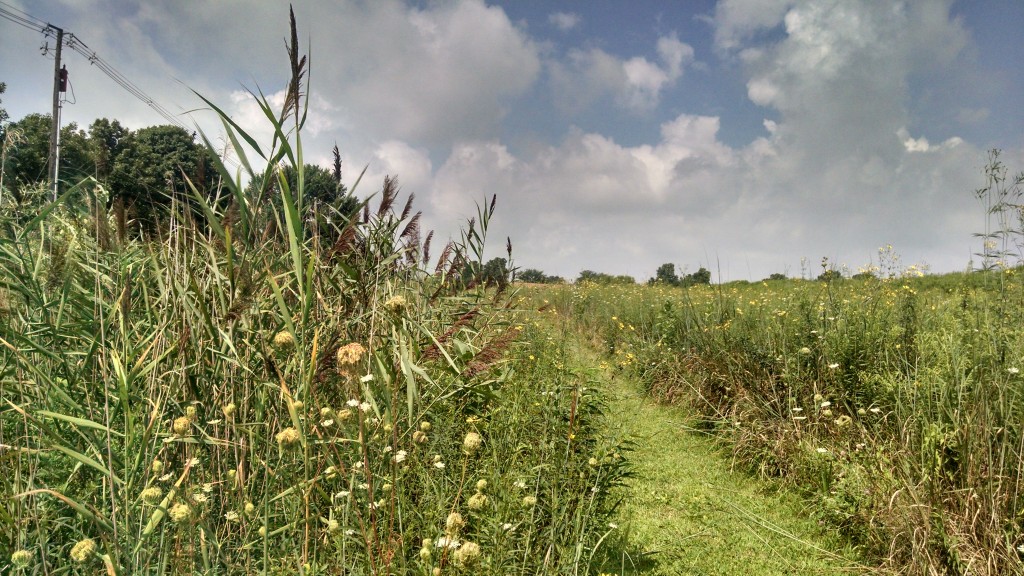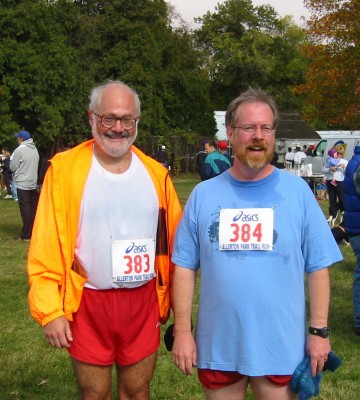It is my considered opinion that no article on medical marijuana, CBD, or THC should use the phrase “There is little scientific evidence” without adding “because for decades the federal government prohibited the research that would have produced such evidence.”
Tag: endocannabinoids
2019-07-08 15:54
It’s almost as if it’s easier to regulate a legal business than one that’s forced to operate outside the law! https://www.wate.com/news/national-world/teen-odds-of-using-marijuana-dip-with-recreational-use-laws/
Clear evidence for the cognitive and neurological benefits
Clear evidence for the cognitive and neurological benefits of low-dose marijuana use in the aging brain https://www.yahoo.com/beauty/marijuana-might-help-aging-brains-191226326.html
Report on exogenous cannabinoid use in exercise
Having written about endocannabinoids as the likely source of runners high, I wanted to draw people’s attention to this report, which talks (in the middle third) about the use of exogenous cannabinoids by athletes.
If runner’s high is not enough, why do people exercise on THC, the active ingredient in cannabis? It is not unusual for athletes, like other social groups that follow common routines, to combine popular lifestyle activities like alcohol (beer after racing) and food consumption (pre-race pasta parties), with others in the clan. The same appears true of cannabis use, enhancing leisure and social activities such as getting together for a run or race.
Source: REPORT: Smoking and Exercise – Dr. Phil Maffetone
Even the first bit (on nicotine as a possible performance-enhancing drug) is interesting, with an appropriate emphasis on tobacco’s dangers. The bit on marijuana, viewed largely through the lens of its possible beneficial effects both during and after exercise, made for a nice contrast.
The vitamin D window has closed

Seven or eight years ago, I became aware of research that suggested that vitamin D deficiencies were a possible cause of seasonal depression. As I have long suffered (albeit mildly) from SAD, I figured it was worth trying a vitamin D supplement, and it did seem to help.
I worry just a bit about taking a supplement, because there are dangers with excessive doses of vitamin D. (A random site on the web suggests that doses over about 10,000 IU per day are dangerous, if continued for a period of months.)
So, I prefer to get my vitamin D via sunlight. A pale-skinned person like me can make upwards of 10,000 IU of vitamin D in just a few minutes of mid-day summer sun—but there’s no danger of getting an overdose: your skin keeps making it as long as you’re in the sun, but once saturated with an optimal amount, it starts un-making it as fast as it makes it.
But it’s the UVB light in the sun that makes the vitamin D, and at my latitude (I live at almost exactly 40° north), little or no UVB gets through the atmosphere during the winter. Specifically, the vitamin D window closed this year on November 20th. It’ll open again on January 20th—although of course it’ll be too cold to expose much skin to the sun for a month or two after that.
This past summer, I spent more time in the sun than in years past, and found that it made me feel especially good—like the opposite of seasonal depression. I imagine it’s the extra vitamin D, although I don’t see any way to tweeze evidence for that hypothesis out from the many other possible reasons. Perhaps it was just more bright light (as opposed to the UVB in particular)—surely the sun is the world’s best light box. Perhaps it was just being more active (I tend to get my sun walking or running, not sitting or lying in the sun). Perhaps it was the endocannabinoids produced during the longer runs in particular. Perhaps it was more time in nature (I spend a lot of my outdoor time walking or running in our local prairie and woods), which is known to be good for the mood. Perhaps it was the extra “together time” Jackie and I got on our very long walks. Perhaps it was the solitude of walks and runs by myself, providing space for meditation.
Whatever it was, I miss it in the winter, and I fixate on a vitamin D deficiency as a possible culprit. Maybe I’ll up my supplement dose. Of course, I won’t do just that. I’ll use my Happy Light™. I’ll go for long walks in the cold and snow. I’ll get out in the prairie and the woods. I’ll try to cover all the possibilities. But I’ll keep taking my vitamin D.
New research on endocannabinoids as source of runner’s high

In line with what I’ve been saying for years now, today The Well has a report of new research supporting the hypothesis that endocannabinoids are much more likely to be the source of runner’s high than endorphins. (See my endocannabinoids tag for previous posts.)
The gist of the experiment was to give mice running wheels, and then measure both mood (anxiety levels, as shown by a willingness to linger in light areas, as opposed to staying in the dark) and blood levels of endocannabinoids and endorphins. Then they used drugs to selectively block receptors for cannabinoids. Doing so eliminated any observable anxiety-reduction effects from running. Blocking receptors for endorphins had no such effect.
The study itself: A runner’s high depends on cannabinoid receptors in mice.
In keeping with earlier research on this effect, the amount of running it takes to see a strong endocannabinoid effect was substantial—the mice were running more than 3 miles a day. I don’t know how far three mouse miles is in human miles. Earlier research suggested that 50 minutes of running was sufficient in humans.
So the subtle upshot of the new study may be that we should run. And if we don’t feel a high, perhaps try running more, until eventually a gentle euphoria may settle in and we can turn to our running companion and say, “Ah, my endocannabinoids are kicking in at last!”
I should probably find some running companions to share this with. I almost always run alone, and it seems like my endocannabinoids kick in just about exactly when I no longer feel any urge to wonder about whether they’re going to kick in or not.
Here’s one of the paths through the prairie where I run:

Katy Bowman: The Michael Pollan of movement
I have always found “deconstructionist” models appealing. For example, I liked the idea that you could “figure out” all the nutrients that you need and then build up a diet that provides the right mix of carbs, proteins, fats (with proper mix between omega-3 and omega-6 fatty acids), the right amounts of fiber, vitamins, minerals, and so on.
Then Michael Pollan came along and (in his book In Defense of Food) completely destroyed that idea. First of all, it’s an impossible problem to solve—the different nutrients interact in the body (and biome) in ways that are intractably complex, plus there are so many micro-nutrients as to make it computationally infeasible (even if we knew what all of them were, which we don’t). More to the point, though, it’s a completely unnecessary problem to solve: our bodies solve it for us, as long as we eat a diet of diverse foods and minimize our consumption of manufactured food-like substances.
I’m not saying this is new news. In fact, this is common knowledge—everybody said this, right from the start. What I’m saying is that, for reasons no doubt having to do with my personality and psychological makeup, I liked the deconstructionist model for analyzing and then constructing a plan for what to eat, despite what everybody said. For some reason, again having to do with my personality and psychological makeup, Michael Pollan’s explanation of how the whole deconstructionist model of designing a plan for eating was fundamentally flawed suddenly made it clear to me (in a way that any number of people—including my third grade health teacher and both my parents—had not managed to do).
All that seems relevant because—I recently realized—for years now I’ve been making the exact same mistake with movement. I’ve been trying to “figure out” an exercise regime that would keep me fit. If you click on the Fitness category over in the sidebar, or the “exercise” tag on this post, you’ll be linked to a long list of my posts on the topic, many of which describe my latest attempt to find the right mix of walking, running, bicycling, lifting, stretching, and taiji to build and maintain optimal levels of aerobic capacity, strength, and flexibility.
Then I ran into the work of Katy Bowman, whose explanations of why exercise is no substitute for movement clicked for me in just the same way, and for roughly the same reason: The problem is intractably complex, and anyway our bodies solve the problem for us—as long as we engage in an ample amount of diverse movement and minimize things like sitting in chairs and wearing bad shoes. (See her book Move Your DNA: Restore Your Health Through Natural Movement.)
Again, this is not really new news; I’m just late to the party because I like the idea of designing an exercise regime that covers all the necessary categories.
However, I think I have come around. Appealing as it is to me to design the perfect exercise regime and then tick off each box as I reach my target for the week, I pretty much have to admit that the whole thing is a fool’s errand. I’d be much better off spending that time walking, stretching, hanging, squatting, climbing, balancing, jumping, throwing, catching, and so on.
I’ll still run (because I enjoy it, probably due to the endocannabinoids, and because being able to run is useful), but I’ll spend a lot less time on things like figuring out how much I can safely add to my weekly mileage. I’ll just run as much as I feel like—while being careful to do so mindfully, and to pay attention to my body, so that enjoying running doesn’t entice me to run more than should.
Still not new news.
Human movement capabilities
I’ve started thinking of my fitness practice more as movement practice. This post is about that shift in my thinking, and if that’s not going to be interesting to you, you’ll probably want to just skip this one.
I have always wanted to be fit, for what I think are mostly ordinary reasons: to be healthy, to look good, to be capable of doing the things that need to be done. For most of my life, my fitness practice fell short of what I thought it ought to be, again for mostly ordinary reasons: I was busy, the weather was bad, I found exercise boring or unpleasant.
I would get my aerobic exercise running and cycling in the summer, and walking year round. When the weather cooperated with a mild spring, I could get in pretty good shape by mid-summer. A couple of years, I even preserved some level of running capability over the winter; one of those years, I ran the Lake Mingo Trail Race, which at 7.1 miles was usually beyond my capability in mid-June when it takes place. But, given the realities of working a regular job (with hours when I needed to be sitting at a computer, rather than out for a run), winter (when I just about don’t cycle or run) and injuries (as my brother likes to say “Running is great exercise, between injuries”), my fitness practice never made me fit for the long term, just fit for a while.
This changed a few years ago, for a couple of reasons.
The less important reason was that my employer closed the site down, and I decided I could get by without a regular job. It means our financial circumstances are a bit straitened, but my hours are my own.
More important, I started practicing taiji.
Taiji gave me balance and control, but much more important, it taught me mindfulness—to be present in my body during my exercise. (I was prompted to write this post at this time because I’ve been reading a blog by Johnathan Mead called Move Heroically, that nicely hits the sweet spot in my evolving interest in fitness. The latest post in particular is on exactly this topic: Embodiment is a Performance Enhancing Drug.)
I like to think of my exercise as building capabilities. I go for long walks because I want to be able to go for long walks. I run because I want to be able to run.
That’s an oversimplification in at least two ways.
For one thing, honesty requires me to admit that I engage in endurance exercise because I like it (perhaps because of the endocannabinoids it generates). A long run at a brisk pace makes me feel good.
More important it’s an oversimplification because specificity of training means that my exercise practice was only building a very narrow slice of the capabilities I imagined. Yes, if I go for a long run every week or two, I do create and maintain the capability to run a long way, but that capability is only barely transferable to other activities. When Jackie and I wanted to go on a century ride, we spent many weeks building up our stamina for long rides. Given how long it’s been since my last long ride, I would not want to stake my life on my capability to bicycle 100 miles without a good bit of training. Maybe fewer weeks because we’re fitter now, but I’d still want weeks of training before attempting another century ride.
It was this realization, in conjunction with my taiji practice teaching me to move more mindfully, that brought me initially to parkour, and more recently to natural movement generally.
Running wasn’t just for fun (although it was fun), and it wasn’t just to be more healthy (although I expect I am). I was explicitly building the capability to run if I needed too. I used that capability sometimes—to catch a bus, to get to an appointment on time—and I imagined that I could use it under other circumstances as well: running away from some danger, running toward someone who needed my help.
But I came to realize that, because of exercise specificity, my capability was a very narrow one indeed. I could run, but I could only barely jump or climb. If I came to a place where I needed to step down I was fine, as long as the drop was only a step or two. But if I needed to jump down by, let’s say, three steps, things got much more problematic. I could climb up a steep path, but am quite daunted if I need to climb up a tree, or cliff, or a wall, or a rope.
That was what brought me to parkour.
Even before I made much progress in the skills of parkour, however, I happened upon natural movement. It shares the roots of parkour, but is less about the specific skills of parkour (vaults and such), and more about basic human movement. Yes, walking and running. Also climbing and jumping and crawling. Balancing. Throwing and catching. Lifting and carrying. Swimming and diving.
So, this is where I’ve come to. I’m very pleased with my walking, and adequately pleased with my running. My climbing skills need considerable broadening. Thanks to taiji, my static balance is okay, but I’m still a beginner when it comes to more dynamic balance. My throwing and catching were never great, and have declined enormously due to a lack of practice since I was a boy. My lifting and carrying skills are deficient, due to too many years lifting weights primarily with machines. If you dropped me in water over my head I could avoid drowning for a while, but unless shallow water or rescue were reasonably close, I would be hard pressed to reach it.
There is a great deal I want to learn (and re-learn) this summer, and I have started in small ways.
 This weir crosses a ditch that runs behind Winfield Village. It’s concrete, a good 12 inches wide, but curved on top, making it a pretty good imitation of a log put across a river to serve as a bridge. I’ve been including it as part of my running route, initially with some difficulty (needing to use the concrete blocks as additional stepping stones), but now crossing on just the weir, and beginning to pick up the pace.
This weir crosses a ditch that runs behind Winfield Village. It’s concrete, a good 12 inches wide, but curved on top, making it a pretty good imitation of a log put across a river to serve as a bridge. I’ve been including it as part of my running route, initially with some difficulty (needing to use the concrete blocks as additional stepping stones), but now crossing on just the weir, and beginning to pick up the pace.
I’m being very careful—Jackie would be quite peeved with me if I injured myself right before our Kal-Haven Trail walk—so I’m not doing much with jumps or vaults yet. But my concept of fitness has broadened greatly, and I’m no longer satisfied with merely a strong heart and strong muscles. I want the full range of human movement capabilities.
More on endocannabinoids
Last month I posted a bit on endocannabinoid production in cursorial mammals, pointing to an article on new research that both supports the hypothesis that endocannabinoids are responsible for runners high, and that the whole system may have evolved to encourage and facilitate long-distance running in mammals whose success depends on it.
I found that I was still quite interested in endocannabinoids and running, and a little more research brought me to this 2004 survey paper by A Dietrich and W F McDaniel in the British Journal of Sports Medicine, endocannabinoids and exercise. It turns out endocannabinoids are involved in a whole range of systems, both centrally in the brain and peripherally in the rest of the body.
Some of the things that endocannabinoids do are entirely to be expected by anyone who has any experience with exogenous cannabinoids: pain relief, sedation, reduced anxiety, euphoria, and a general sense of wellbeing.
But other things were new to me:
- Anandamide, a particular endocannabinoid, prevents edema and inflammation—probably a very useful mechanism. After all, running is bound to produce minor tissue damage to the feet and legs. Those endocannabinoids probably greatly reduce the need to get clever with ice and elevation and compression and anti-inflammatory drugs.
- Anadamide also acts as a vasodilator and produces hypotension, perhaps facilitating blood flow during exercise.
- Although in large doses cannabinoids produce motor inhibition, in low doses they produce increased locomotion. It appears that they make it easier to perform motor skills that have been practiced to the point where performance is automatic, such as running.
- Cannabinoids act as brochodilators, perhaps facilitating breathing during exercise.
On that last point, I’ve certainly noticed that going for a run produces a profound relaxation of my upper airways. My nasal passages are pretty much permanently inflamed due to allergies—to the point that I spent most of last year needing to use a nasal steroid spray if I wanted to be able to breath through my nose. I have no idea if it’s mediated by endocannabinoids, but my nose is much, much more open after a run than it is before a run, and the effect lasts for hours.
One thing I found particularly interesting was an explanation for why cannabinoids don’t seem to be very addictive. They’re involved in the same dopamine systems that other addictive drugs are, and by rights ought to produce withdrawal symptoms when they’re withdrawn. In fact, you can produce those symptoms (in rats), by habituating the rats to THC and then administering an antagonist that blocks cannabinoid receptors. But mere withdrawal of the drug won’t do it, apparently because the drug hangs around in the system for so long that even abrupt withdrawal ends up resulting in a gradual tapering off.
On the other hand, gradual withdrawal is still withdrawal—even if it’s not drastic enough to produce shakes—and endocannabinoids may explain not only runners high, but also the addictive behaviors reported in runners:
We do not suggest that the addictive aspects of exercise are identical with the addictive properties of exogenous cannabinoids, but that a similarity exists between the desire that some people have for exercise and the desire they may have for exogenous administrations of cannabinoids. The parallels between these results and the subjective experiences associated with exercise abstinence, as discussed previously, are considerable.
What led me to this paper in the first place was a desire to get some data on just how much exercise was necessary to start producing endocannabinoids. On that question, the paper does provide a datapoint:
Using trained male college students running on a treadmill or cycling on a stationary bike for 50 minutes at 70–80% of maximum heart rate, we found that exercise of moderate intensity dramatically increased concentrations of anandamide in blood plasma.
That sounds pretty reasonable, although I wish they had data for exercise for 10 to 40 minutes as well. My guess, based on reports of runners high, is that it does take upwards of 50 minutes to start seeing a significant increase, but it’s just a guess. It’d be nice to have some data.
Most unconditioned people can’t maintain 70–80% of maximum heart rate for 50 minutes, meaning that if it’s true that it takes 50 minutes, most people won’t be able to experience this “dramatic” increase. The typical sedentary person would probably have to train for weeks to achieve this level of performance.
So far this year, my longest run was 26 minutes. But it was a great run (unlike my first long runs of the previous two years, which were not entirely successful). I’m quite optimistic that I’ll be able to ramp up the distance without much difficulty.
The wrong class of euphoria-inducing chemicals


I remember back in the late 1970s and early 1980s people were speculating that endorphins might be the source of runners high—and I remember how disappointed they were when experiments showed that exercise-induced levels of endorphins were much too low to produce the reported levels of euphoria.
They may simply have been looking for the wrong class of euphoria-inducing chemicals—it now looks like runners high may be produced not by endorphins but by endocannabinoids. Further, according to a paper in the Journal of Experimental Biology, there’s reason to believe that this euphoria is important enough in improving reproductive fitness that it is broadly selected for in cursorial mammals (that is, those with bodies suited for running). See Endocannabinoids motivated exercise evolution for an overview. (The paper itself was behind an annoying paywall when I originally posted this, but now seems to be available here: https://doi.org/10.1242/jeb.063677.)
This could explain a lot of otherwise hard-to-explain behavior:
. . . a neurobiological reward for endurance exercise may explain why humans and other cursorial mammals habitually engage in aerobic exercise despite the higher associated energy costs and injury risks, and why non-cursorial mammals avoid such locomotor behaviors.
Sadly, the evolved system does not show much promise for turning couch potatoes into endurance athletes:
. . . couch potatoes are not about to leap suddenly out of their comfy chairs and experience the pleasurable effects of exercise, because they probably cannot produce enough endocannabinoids. . . . Inactive people may not be fit enough to hit the exercise intensity that leads to this sort of rewarding sensation.
This is why I’m so pleased at having come up with an exercise regimen that I can persist with over the winter—I enter spring already able to enjoy the euphoric joys of exercise without having to first get in shape.
